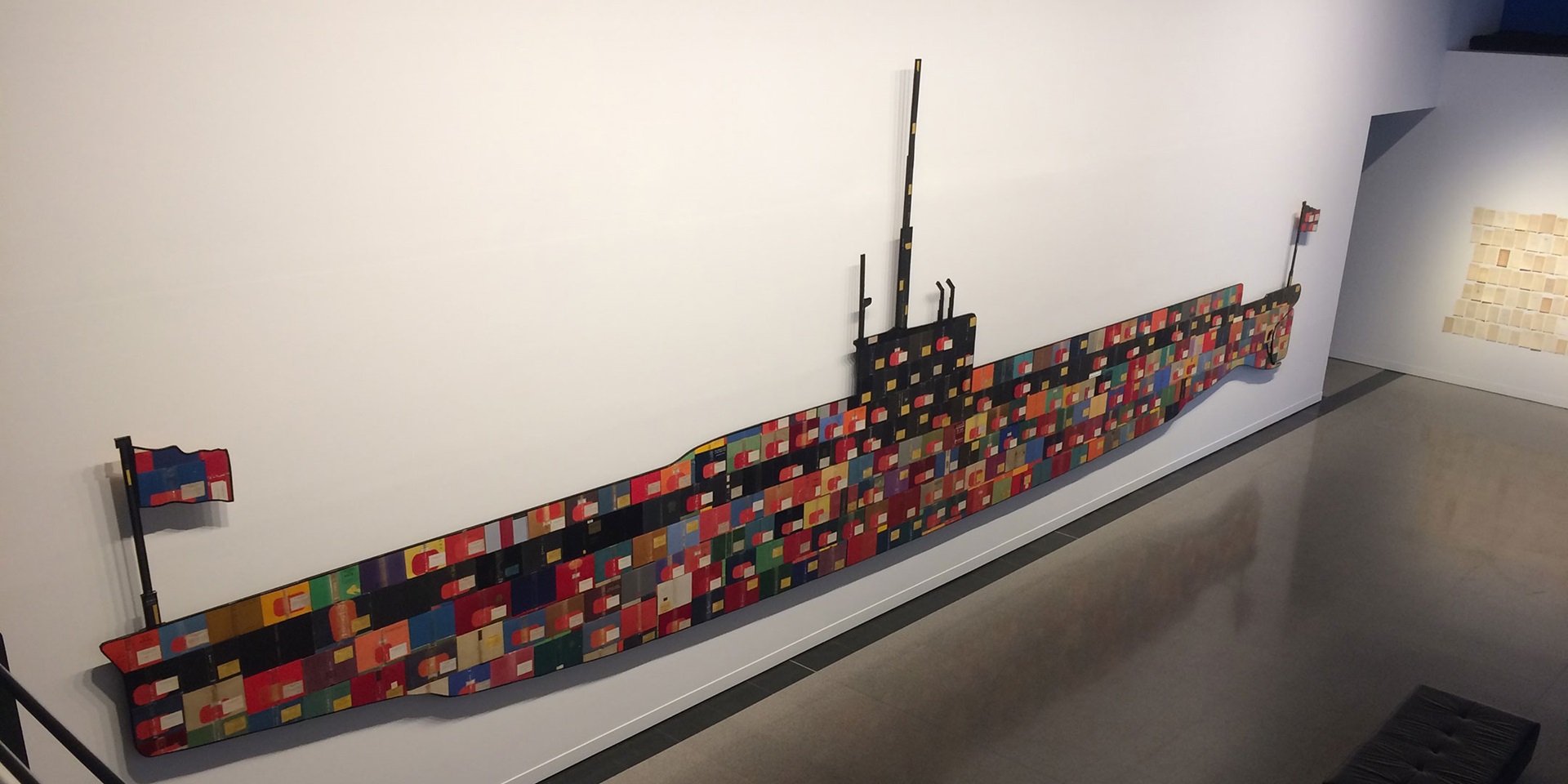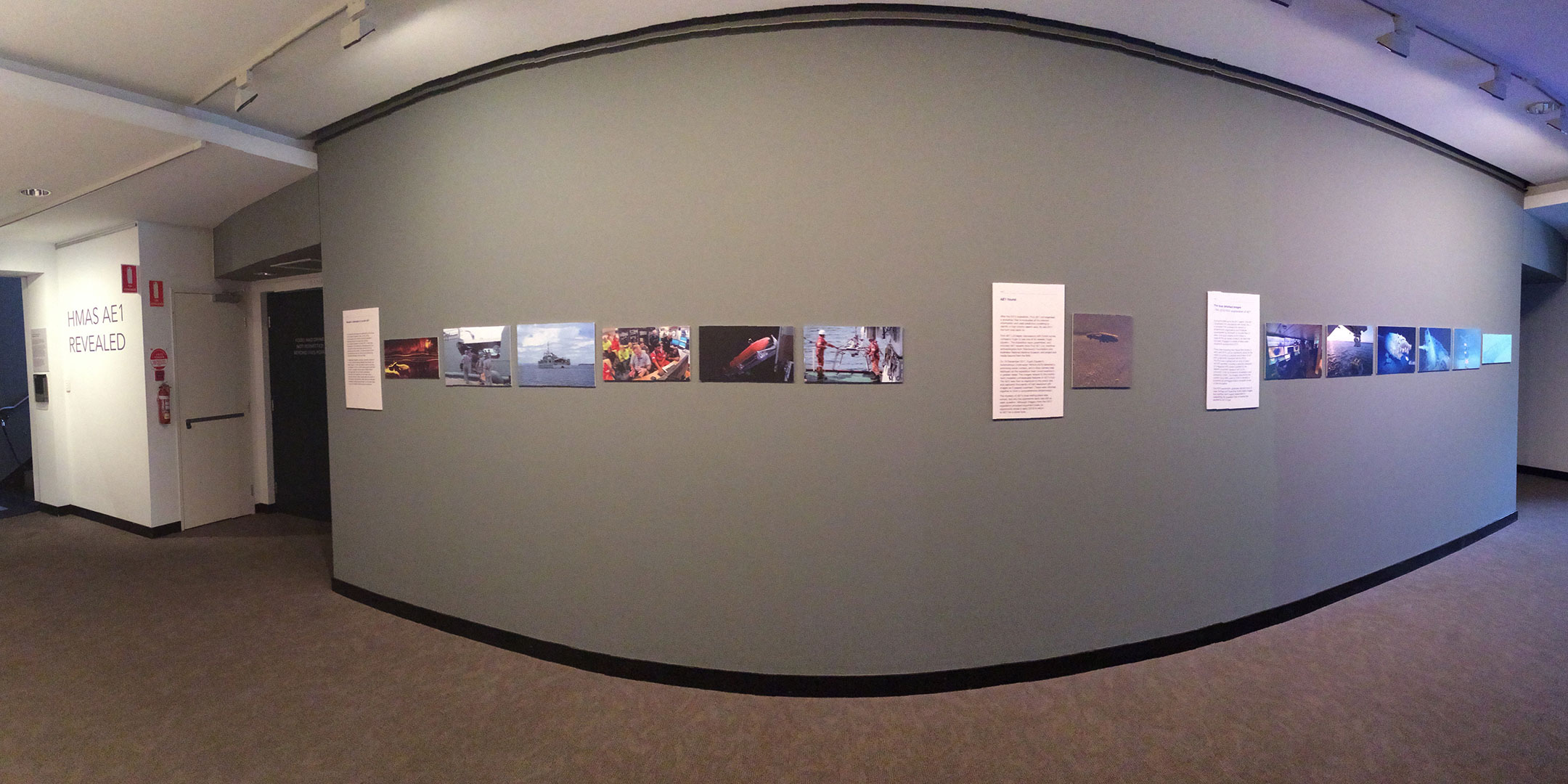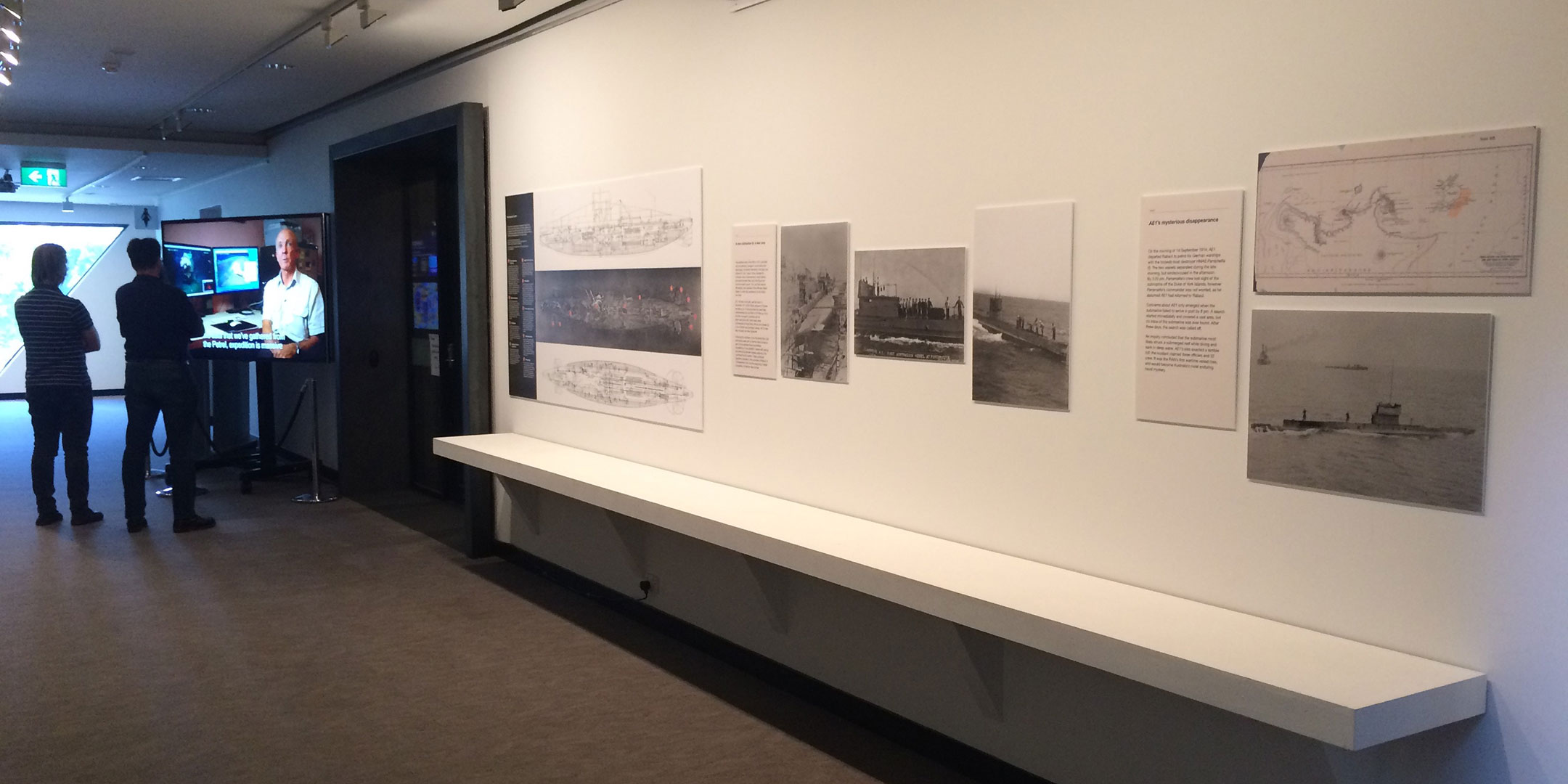More about the Artwork
This large-scale 14 metre long installation is made in the shape of the AE1 – the first Australian submarine. The submarine along with its 35 crew disappeared in September 1914 in the first months of World War One, while on patrol near New Guinea. After being lost for 103 years, the AE1 was discovered in 2017.
The installation is made from over 300 book covers, ‘rescued’ from the United Service Institution of WA Library (a library belonging to Officers of the Defence Forces at the Perth Barracks) that was disbanded a few years ago and was going to be sent to landfill.
The exhibition is about memory – the very human act of forgetting, and selective remembering and the artist draws attention to the books as being both visually and historically intriguing conduits for this.
The ‘found’ books were nearly all about War: the many wars in history and especially about the first and second world wars, the countries involved and the aftermath of war. The most poignant, for the artist were books written by individuals about their own war experiences, and written in the hope that ‘we never forget the horrors of war’.
The installation explores the aesthetics and provenance of the book covers, highlighting the absorbing titles, textures, colours and fonts, that speak so resonantly of the 1930s, 40s and 50s. The elements of an archival system are also visible in labels and handwritten catalogue numbers. Other marks show the signs of use: of being held and handled, of being considered and valued. In their materiality they tell a story that cannot be told in the same way by digital media. The book itself is a form of collective remembering, as the many who handle and read it add to its wear and tear; and like an aged body, this encourages an attitude of respect and empathy.
The artist draws our attention to the fact that for a variety of reasons, many of our cultural institutions are currently acting both clandestinely and openly to dispose of large numbers of books. She acknowledges that in questioning this practice and creating this artwork, with cruel irony, she herself has had to destroy books.
The exhibition is on at Curtin University in the gallery immediately outside the HIVE.
For bookings and enquiries, please contact touringexh@anmm.gov.au


